Rita Ibrahim
Dual Gradient Descent EMF-Aware MU-MIMO Beamforming in RIS-Aided 6G Networks
Oct 03, 2022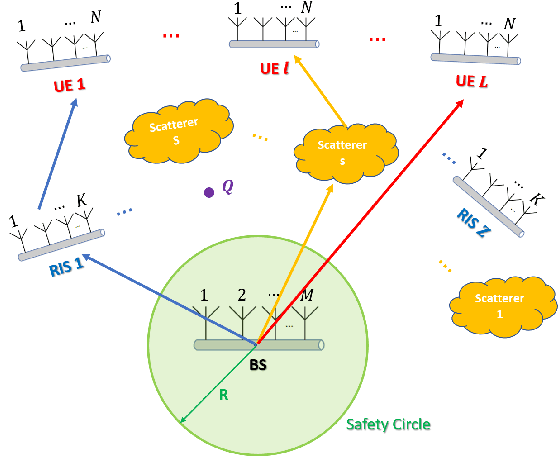
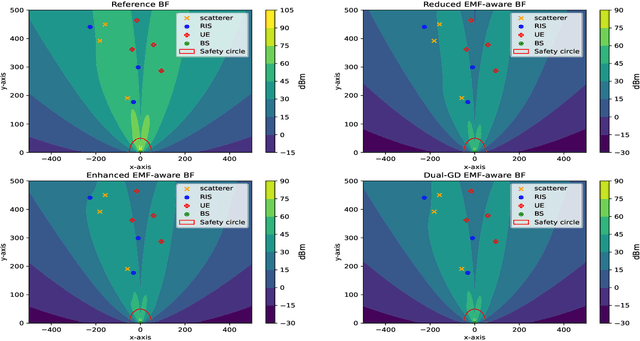
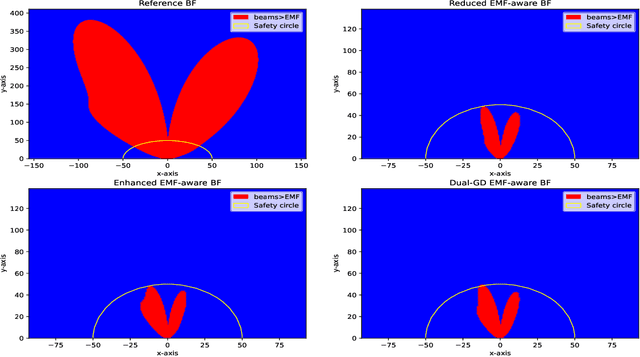
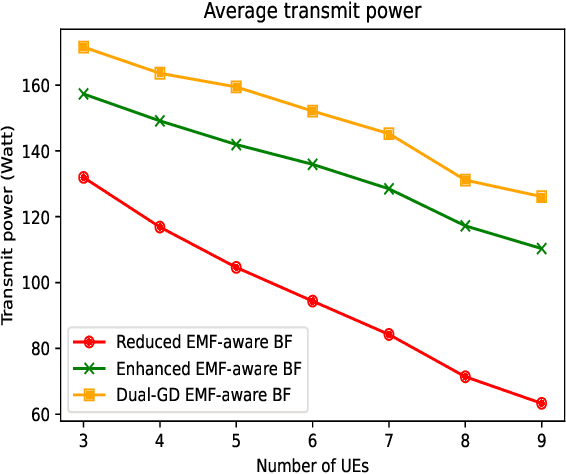
Abstract:Reconfigurable Intelligent Surface (RIS) is one of the key technologies for the upcoming 6th Generation (6G) communications, which can improve the signal strength at the receivers by adding artificial propagation paths. In the context of Downlink (DL) Multi-User Multiple-Input Multiple-Output (MU-MIMO) communications, designing an appropriate Beamforming (BF) scheme to take full advantage of this reconfigured propagation environment and improve the network capacity is a major challenge. Due to the spatial dimension provided by MIMO systems, independent data streams can be transmitted to multiple users simultaneously on the same radio resources. It is important to note that serving the same subset of users over a period of time may lead to undesired areas where the average Electromagnetic Field Exposure (EMFE) exceeds regulatory limits. To address this challenge, in this paper, we propose a Dual Gradient Descent (Dual-GD)-based Electromagnetic Field (EMF)-aware MU-MIMO BF scheme that aims to optimize the overall capacity under EMFE constraints in RIS-aided 6G cellular networks.
EMF-Aware MU-MIMO Beamforming in RIS-Aided Cellular Networks
Sep 29, 2022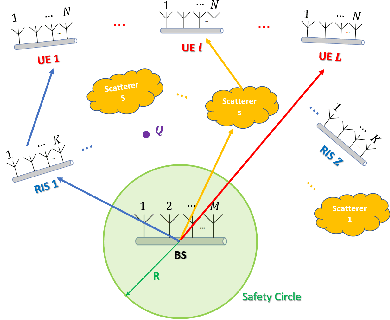
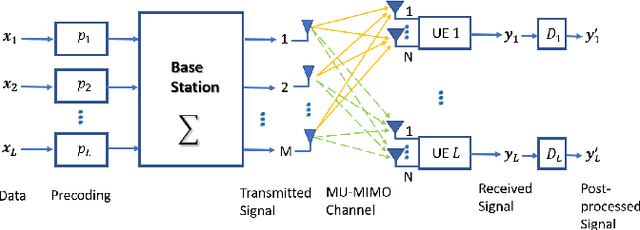
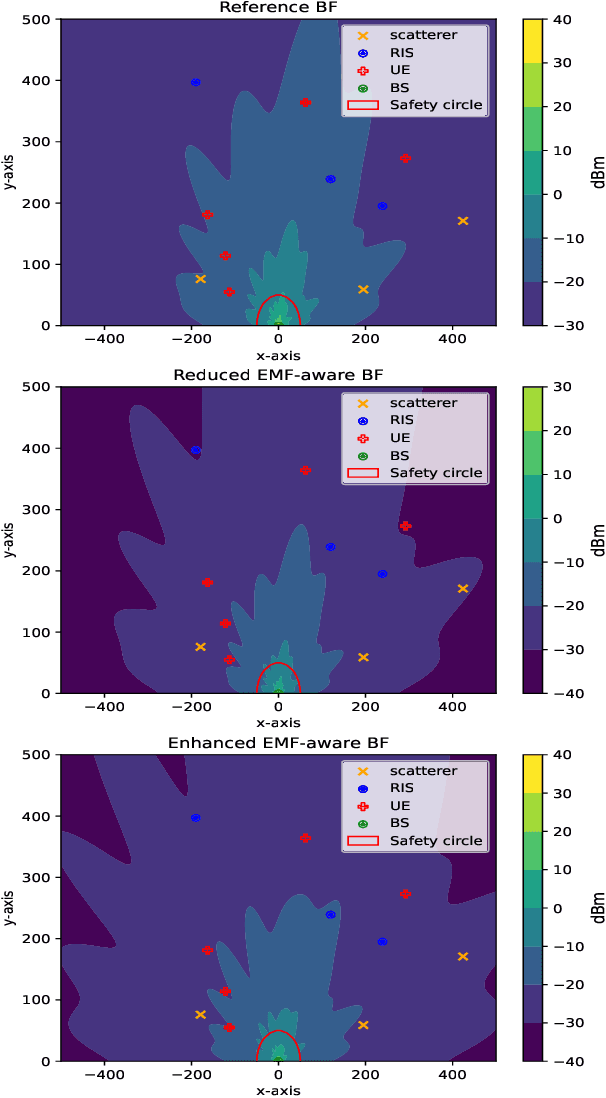
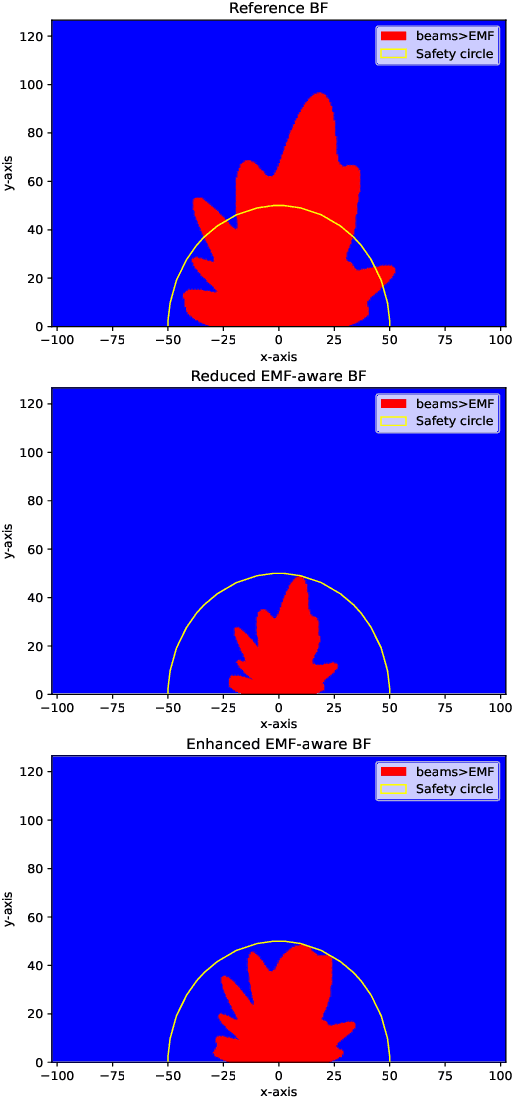
Abstract:Reconfigurable Intelligent Surfaces (RISs) are one of the key emerging 6th Generation (6G) technologies that are expected to improve the link budgets between transmitters and receivers by adding artificial propagation paths. In such re-configured propagation environment, Downlink (DL) Multi-User Multi-Input Multi-Output (MU-MIMO) brings capacity improvement to cellular networks. It benefits from the spatial dimension offered by MIMO systems to enable simultaneous transmission of independent data streams to multiple users on the same radio resources by applying appropriate Beamforming (BF) schemes. However, in some cases, serving the same subset of users for a long period of time may cause some undesired regions where the average Electromagnetic Field Exposure (EMFE) exceeds the regulatory limits. To address this challenge, we propose in this paper a novel Electromagnetic Field (EMF) aware MU-MIMO BF scheme that aims to optimize the overall capacity under EMF constraints in RIS-aided cellular networks.
 Add to Chrome
Add to Chrome Add to Firefox
Add to Firefox Add to Edge
Add to Edge